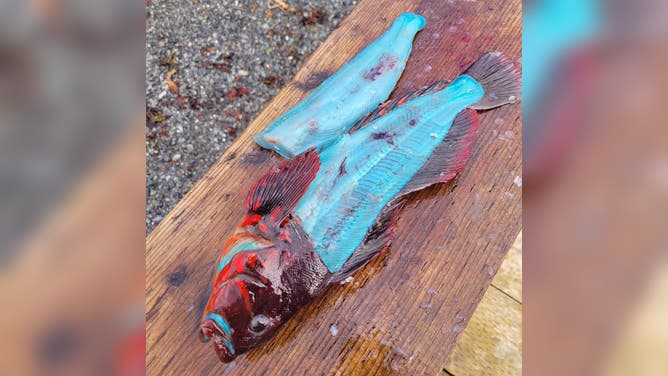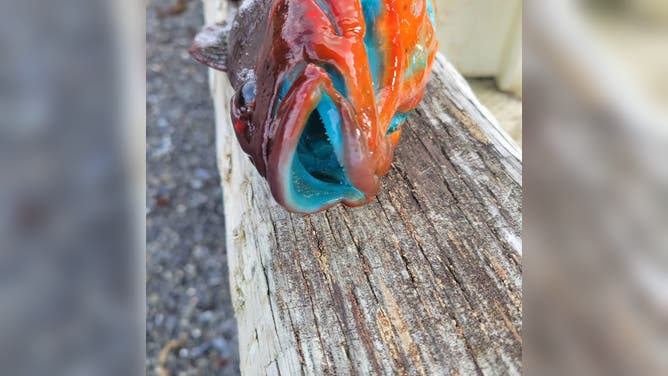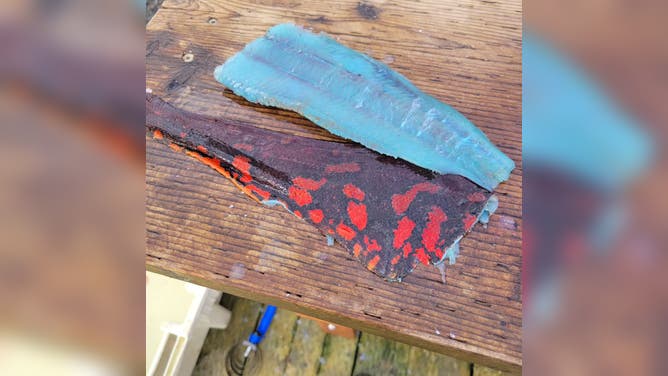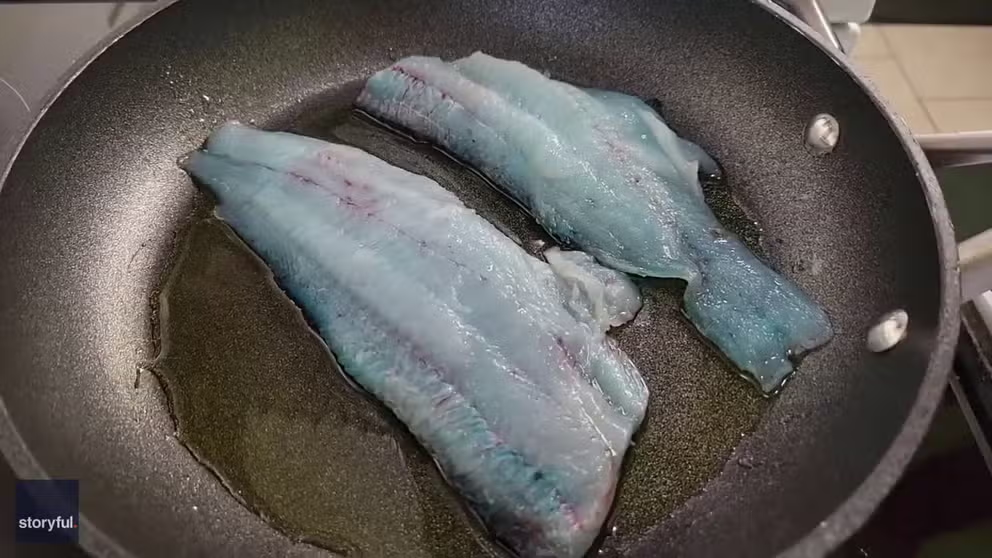Alaska fisherman hooks and cooks blue-fleshed fish: ‘Mother Nature is incredible’
Rock greenlings are common along the Pacific from Alaska's Bering Sea to Point Conception, California. The color of the species varies from green-ish to brown.
Watch: Turquoise blue fish flesh fade while cooked
The brilliant blue of the rock greenling's flesh fades and turns white when cooked.
An Alaska fisherman is showing off an unusual catch – a rock greenling.
It might not sound that impressive, but the eye-popping, rare fish truly looks too out-of-this-world to be real – but it is. Blue meat and all.
Rock greenlings are part of the common species of greenling fish. Rock greenlings in particular are found along the Pacific Coast, from the Bering Sea in Alaska to Point Conception, California, though the species is fairly uncommon further south.
FISHERMAN LANDS 283-POUND ‘RIVER MONSTER’ TO BEAT 72-YEAR-OLD ANGLING WORLD RECORD

The rock greenling sports orange scales and brilliant blue flesh.
( Credit: Lodgeottercove.com via Storyful / FOX Weather)
Rock greenlings aren’t an impressive catch size-wise; they only get up to about 24 inches in length and less than 2 lbs. in weight.
But in trying to snag one of the rare ones that have the cool blue hue, they become worthy of the chase.
"Mother Nature is incredible," said Joe Chmeleck, the fisherman.

The vivid fish is tough to catch, according to the fisherman.
( Credit: Lodgeottercove.com via Storyful / FOX Weather)
‘One in 40 are blue’
Their body varies in color from greenish to brown, and most males tend to have red blotches on the side, according to the Washington Department of Fish & Wildlife.
Their interior can be even more magical, with a blue mouth and flesh as bright as anything you’d see in a candy shop.
Joe Chmeleck caught one in late August in Homer, Alaska. He owns a fishing lodge in the area called The Lodge at Otter Cove.
DRAMATIC VIDEO SHOWS MASSIVE SHARK RESCUED AFTER BECOMING STRANDED ON FLORIDA BEACH

The rock greenling's insides are blue throughout.
( Credit: Lodgeottercove.com via Storyful / FOX Weather)
"We caught the fish in 40 feet of water while rock fishing," he said. "When we are rock fishing, about one in 40 are these blue fish."
Hundreds of people were stunned when they saw Chmeleck’s pictures on social media.
Many commented on how beautiful the fish looked.
"Probably where ‘One Fish, Two Fish, (Red) Fish, Blue Fish’ came from," another joked.
SEE THE GHOSTLY ANIMAL THAT HAS SET THE RECORD FOR THE DEEPEST-LIVING FISH

The fillets of the rock greenling.
( Credit: Lodgeottercove.com via Storyful / FOX Weather)
The color is caused by a green bile pigment called Biliverdin, Alaska Department of Fish and Game biologist Donald Arthur told Alaska News Source.
While scientists know where the blue pigment comes from, they are still unsure why fish produce it. It could be a result of UV radiation, diet or genetics, Arthur said.
‘Tastes like trout’
When the fish is cooked, the blue color fades away. Chmeleck also posted a video of him cooking the fish to demonstrate how the meat will turn white.
NEVER BEFORE SEEN FISH FOUND MORE THAN 3 MILES UNDER THE SEA

The filets turn white when cooked.
( Credit: Lodgeottercove.com via Storyful / FOX Weather)
He said it tasted like trout.
